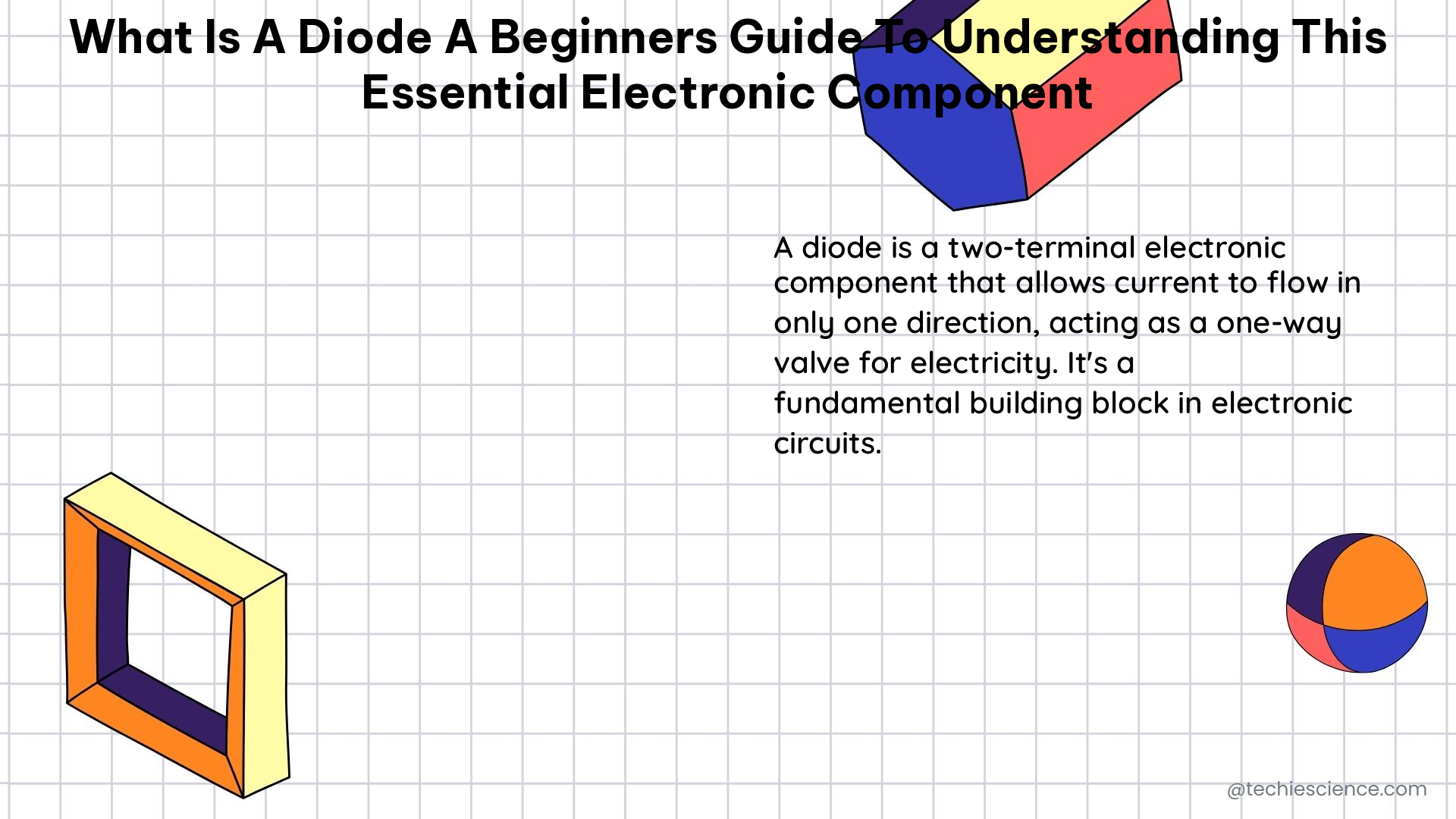A diode is a fundamental electronic component that controls the direction of current flow, allowing it to flow in one direction while blocking it in the opposite direction. It is made from a PN junction, which consists of a negatively doped and positively doped semiconductor material joined together.
Understanding the PN Junction
The PN junction creates a depletion region that acts as an insulator and prevents current flow. When a positive voltage is applied from the positive side to the negative side, the depletion layer disappears, and current can flow from the positive to the negative side. Conversely, when a voltage is applied in the opposite direction, from the negative to the positive side, the depletion region expands, resisting any current flow.
Depletion Region
The depletion region is a critical component of the diode’s operation. It is formed when the negatively doped (N-type) and positively doped (P-type) semiconductor materials are joined together. This junction creates a region where the majority charge carriers (electrons in the N-type and holes in the P-type) have been depleted, leaving behind a region of fixed positive and negative charges.
The width of the depletion region is determined by the doping concentrations of the N-type and P-type materials, as well as the applied voltage. When no voltage is applied, the depletion region is typically around 1 micrometer (μm) wide. As a reverse bias voltage is applied, the depletion region expands, increasing the resistance to current flow.
Forward Bias and Reverse Bias
When a positive voltage is applied to the P-type material (anode) and a negative voltage is applied to the N-type material (cathode), the diode is said to be in forward bias. This causes the depletion region to narrow, allowing current to flow freely through the diode.
Conversely, when a negative voltage is applied to the P-type material and a positive voltage is applied to the N-type material, the diode is in reverse bias. This causes the depletion region to expand, creating a high resistance to current flow.
Diode Characteristics

Diodes have several key characteristics that define their behavior and performance:
Forward Voltage Drop
The forward voltage drop is the minimum voltage required for the diode to start conducting in the forward direction. This voltage is typically around 0.7V to 1V for silicon diodes and 0.3V to 0.6V for germanium diodes.
Reverse Breakdown Voltage
The reverse breakdown voltage is the maximum voltage that can be applied in the reverse direction before the diode breaks down and allows current to flow. This voltage is typically in the range of several hundred volts to several thousand volts, depending on the specific diode.
Reverse Leakage Current
When a diode is in reverse bias, a small amount of current, known as the reverse leakage current, will still flow through the diode. This current is typically in the range of microamps (μA) to nanoamps (nA), depending on the diode’s characteristics and the applied reverse voltage.
Power Dissipation
The power dissipation of a diode is the maximum amount of power it can safely handle without being damaged. This is typically in the range of a few milliwatts (mW) to several watts (W), depending on the diode’s size and construction.
Diode Symbols and Markings
Diodes have two pins, the anode and the cathode, and are represented in circuits by a symbol that looks like an arrow pointing toward a line. The line represents the cathode side, and so does the line marking on the diode component itself. In most diodes, the cathode side is marked with a stripe or band.

Diode Applications
Diodes are used in a wide range of electronic circuits, including:
- Power Supplies: Diodes are used to convert alternating current (AC) to direct current (DC) in power supply circuits.
- Signal Processing: Diodes are used in signal processing circuits, such as rectifiers, clippers, and clampers, to shape and condition electrical signals.
- Protection Circuits: Diodes are used to protect electronic circuits from voltage spikes and other transient events.
- Sound Effects: Diodes are used in some electronic musical instruments and effects pedals to create unique sound effects.
Testing Diodes with a Multimeter
When testing a diode with a multimeter, the forward voltage can be measured by connecting the positive test lead to the diode’s anode and the negative test lead to the diode’s cathode. The multimeter display will show the forward voltage of the diode.
To test for reverse breakdown, the positive test lead should be connected to the cathode and the negative test lead to the anode. The multimeter should display a high resistance value, indicating that the diode is not conducting in the reverse direction.
Conclusion
Diodes are essential electronic components that control the direction of current flow and are used in a wide range of electronic circuits. By understanding the principles of the PN junction, the characteristics of diodes, and their various applications, you can become a more knowledgeable and effective electronics enthusiast or professional.
References:
- Diode Tutorial for beginners- Electronics Crash Course #11 – YouTube
- What is a Diode? A Guide For Beginners – Build Electronic Circuits
- A Complete Guide to Diodes – Circuit Basics

The lambdageeks.com Core SME Team is a group of experienced subject matter experts from diverse scientific and technical fields including Physics, Chemistry, Technology,Electronics & Electrical Engineering, Automotive, Mechanical Engineering. Our team collaborates to create high-quality, well-researched articles on a wide range of science and technology topics for the lambdageeks.com website.
All Our Senior SME are having more than 7 Years of experience in the respective fields . They are either Working Industry Professionals or assocaited With different Universities. Refer Our Authors Page to get to know About our Core SMEs.